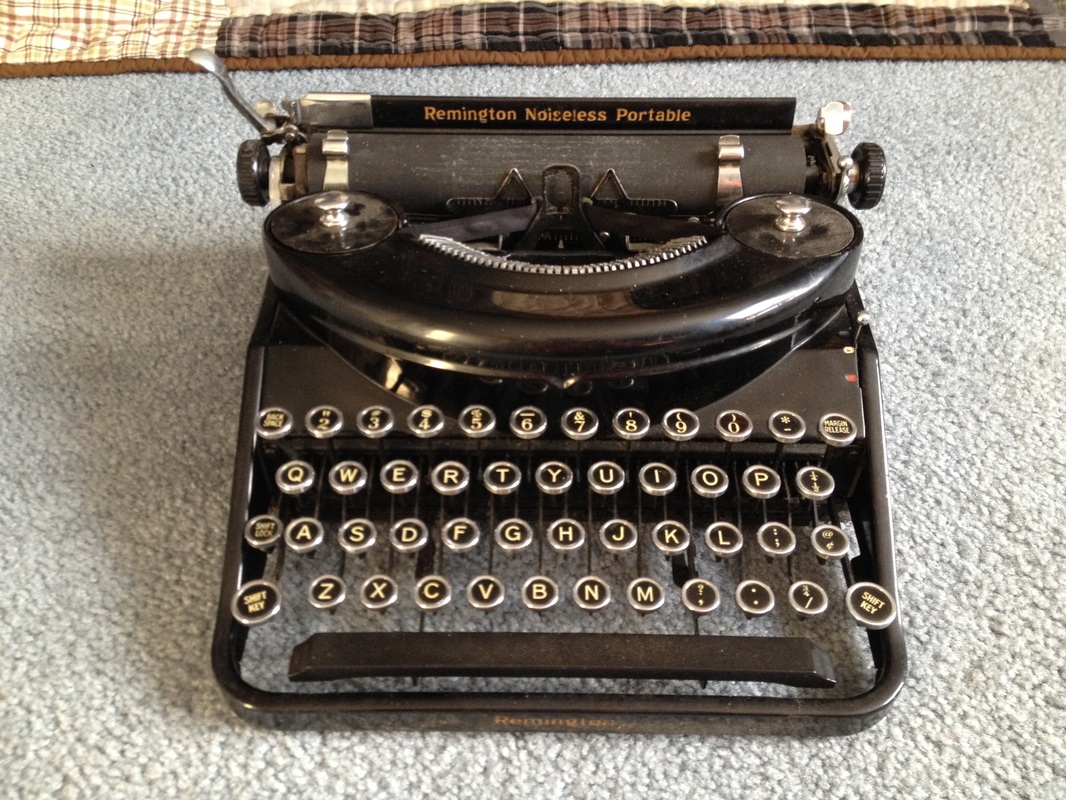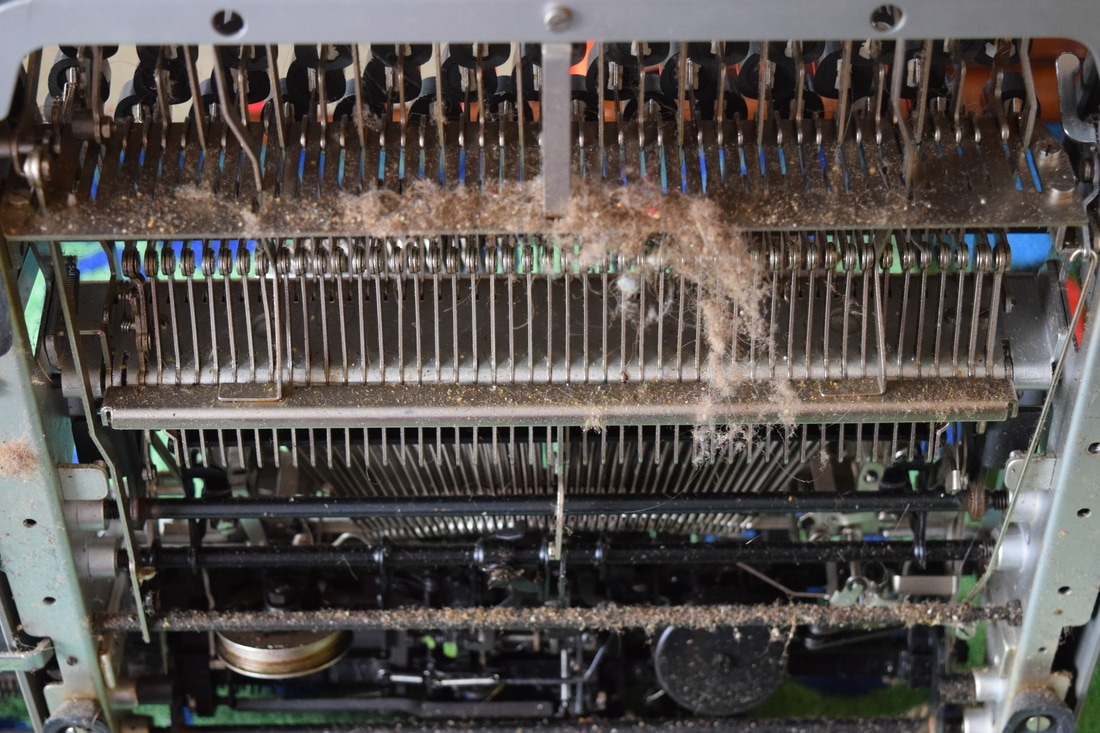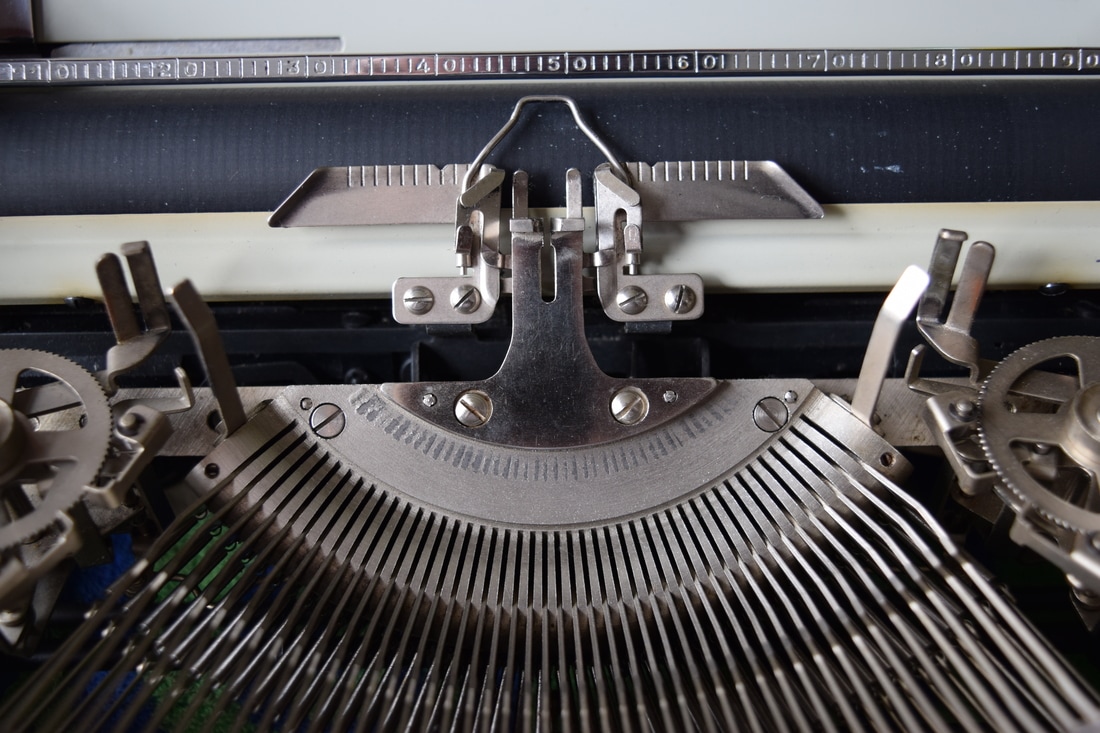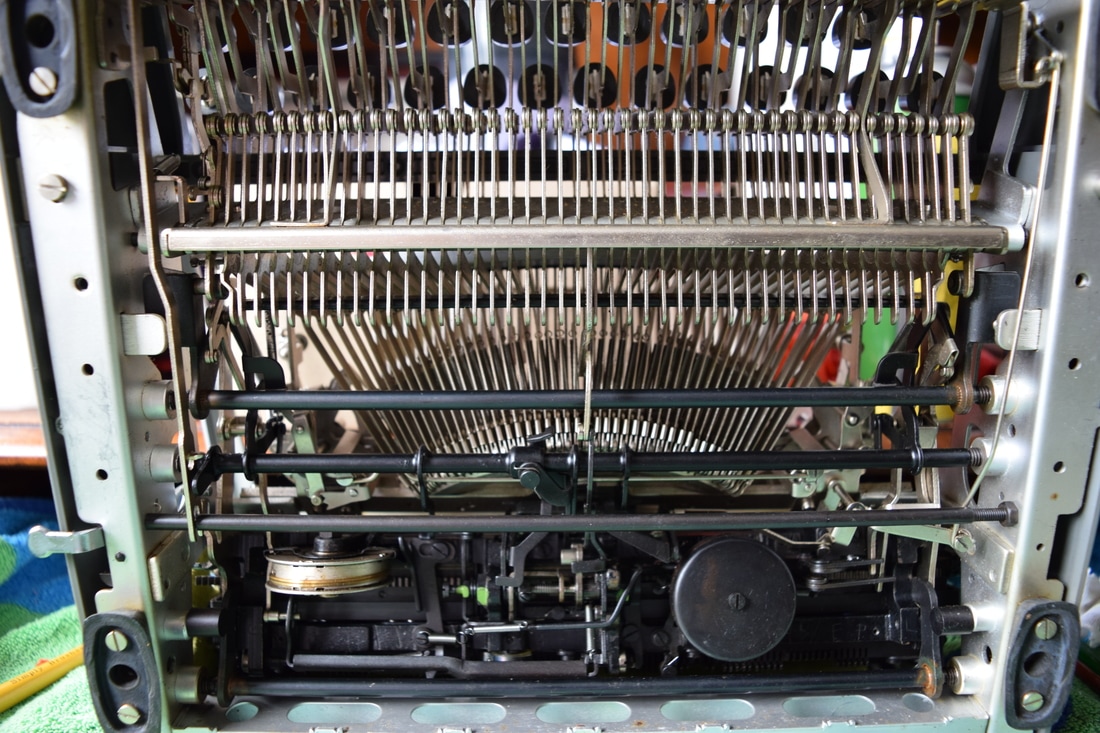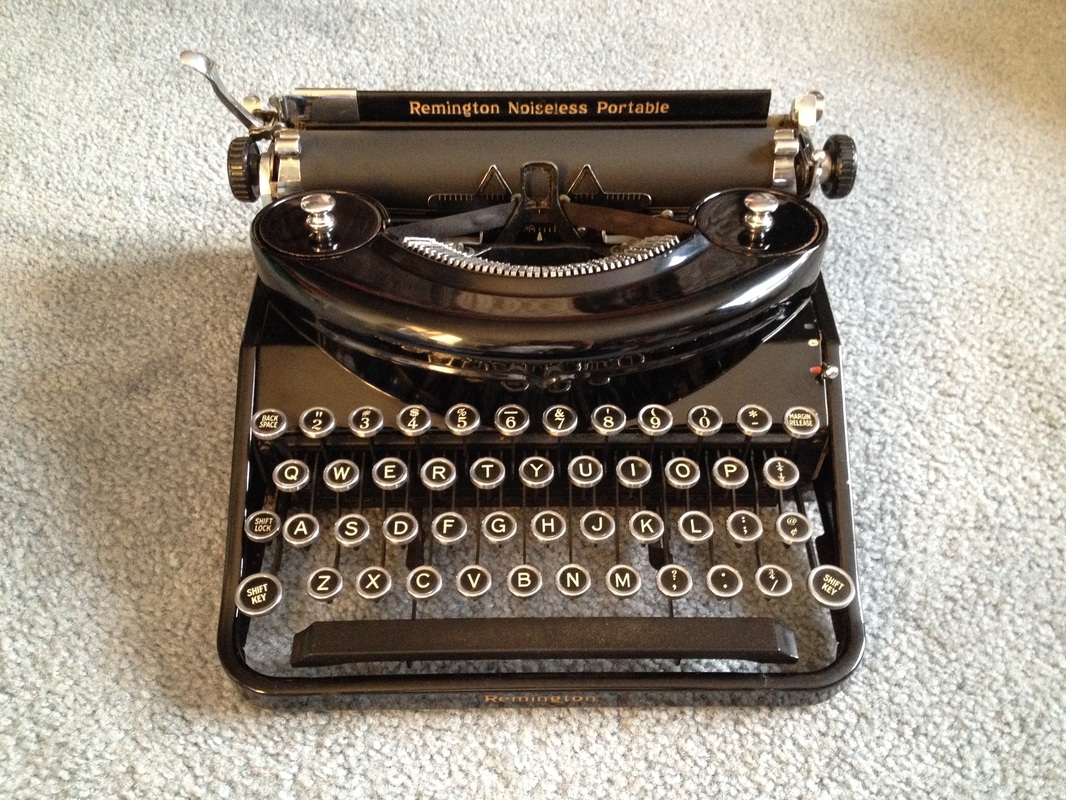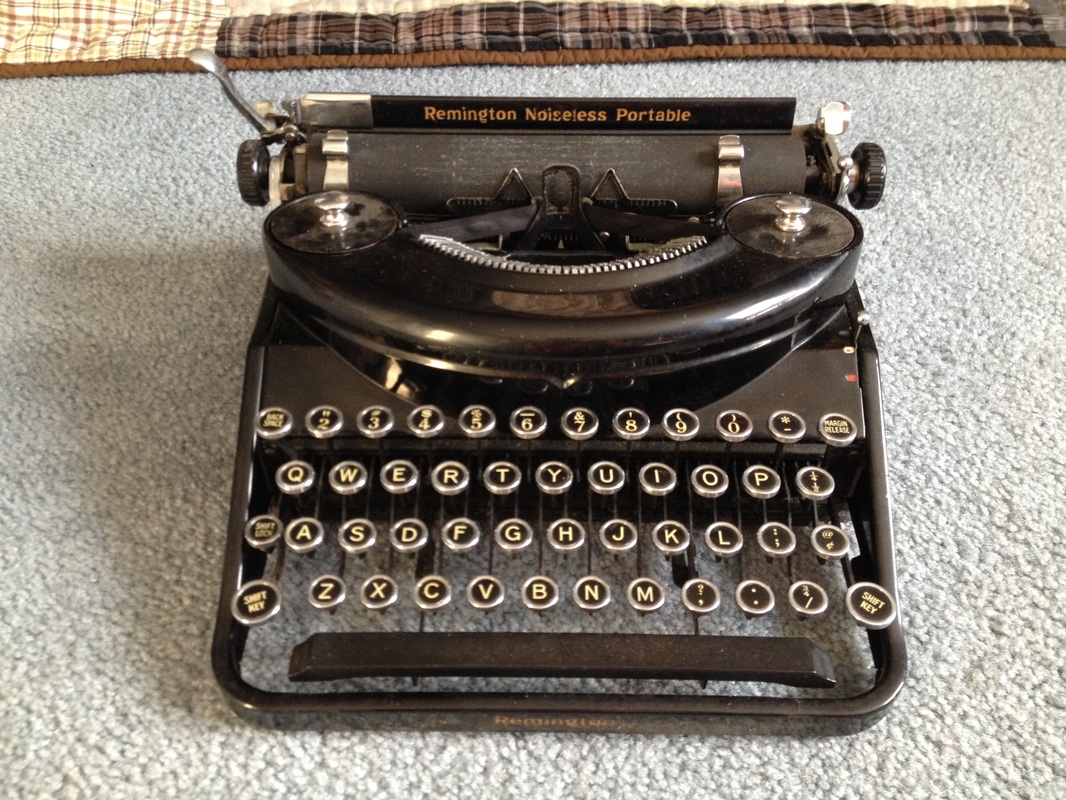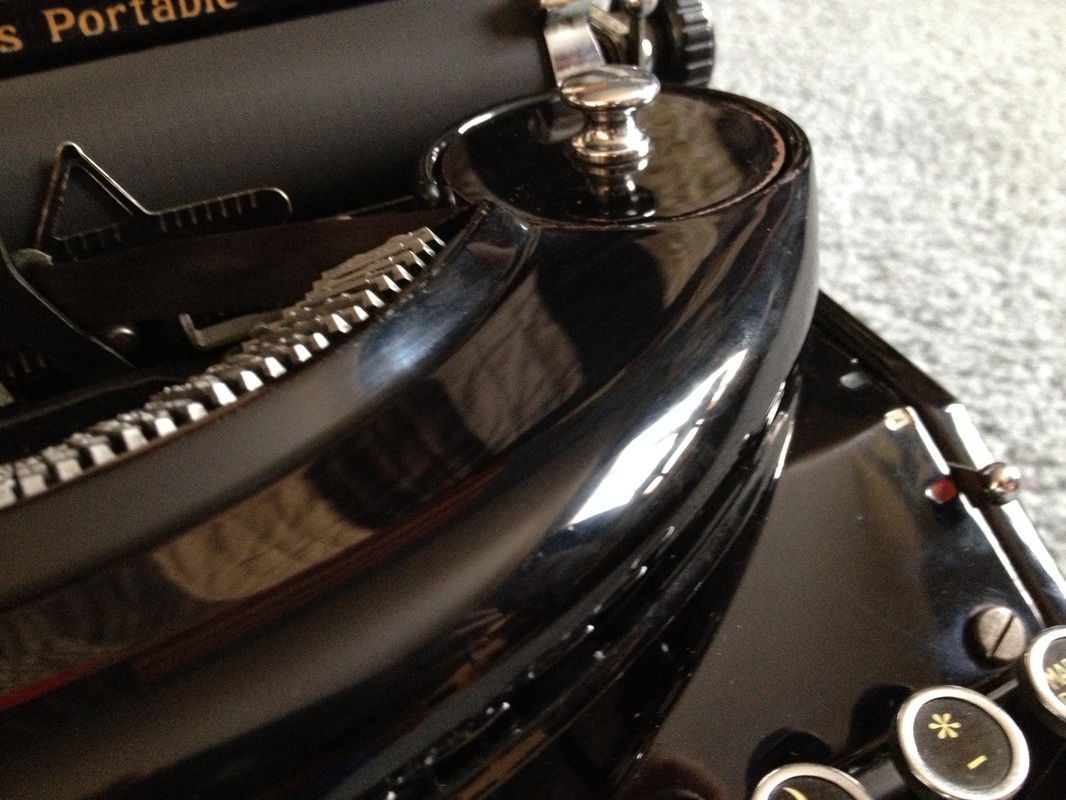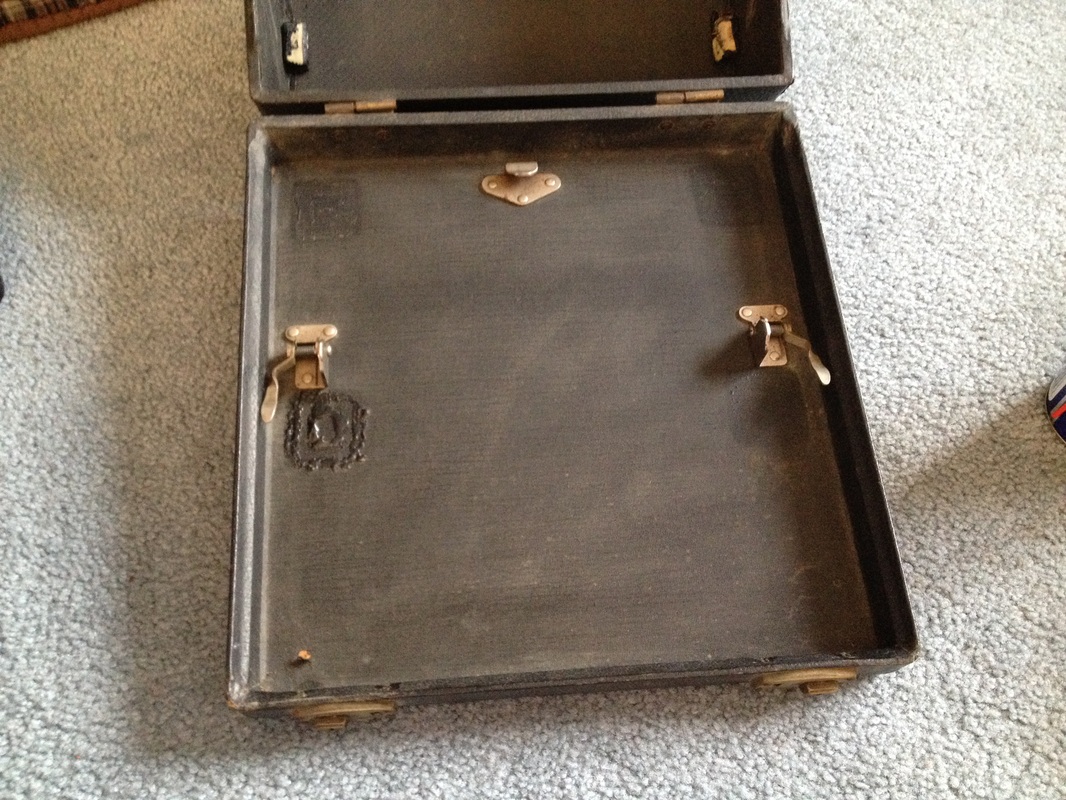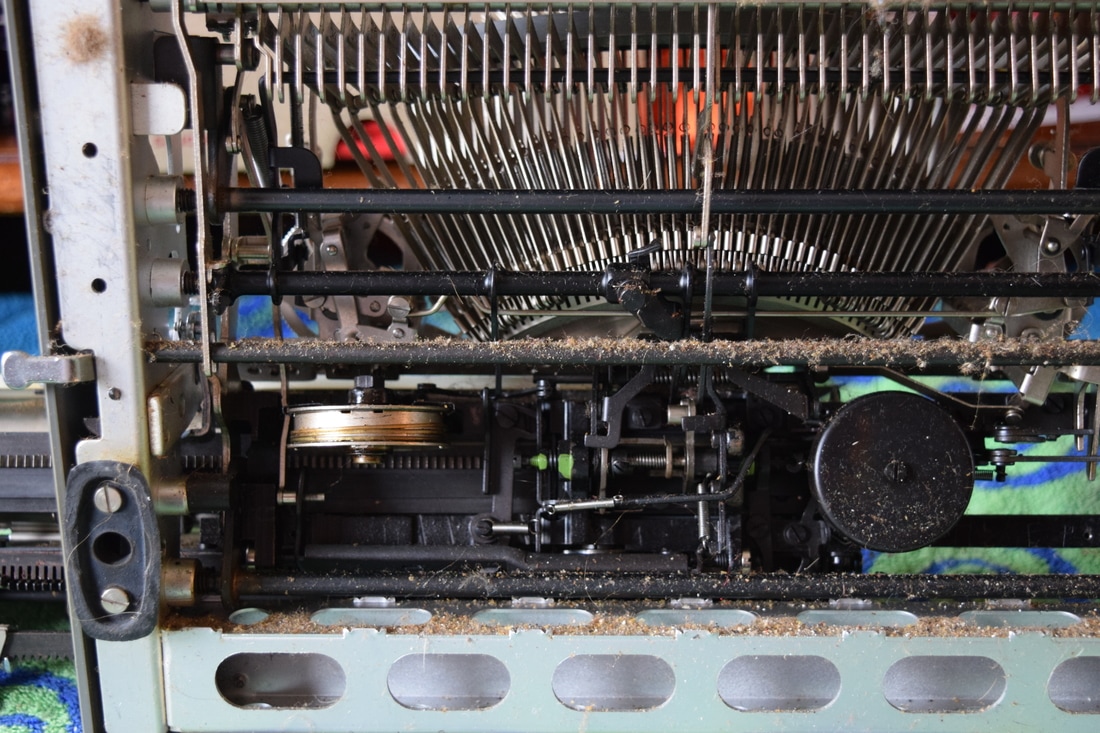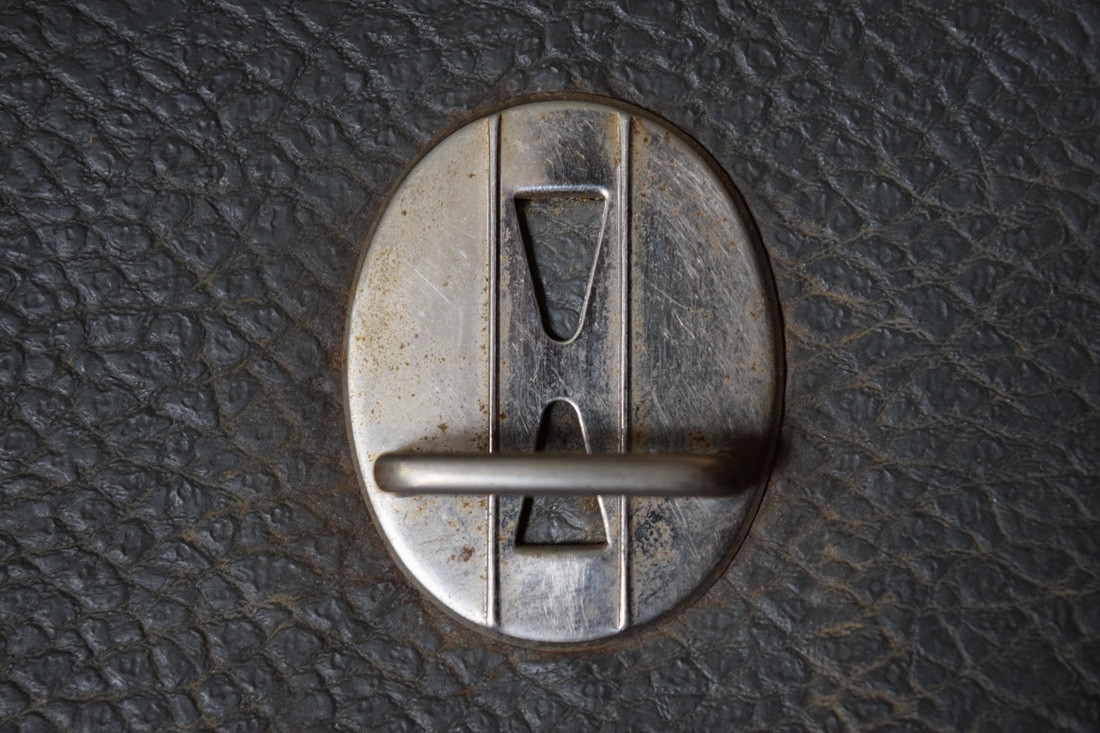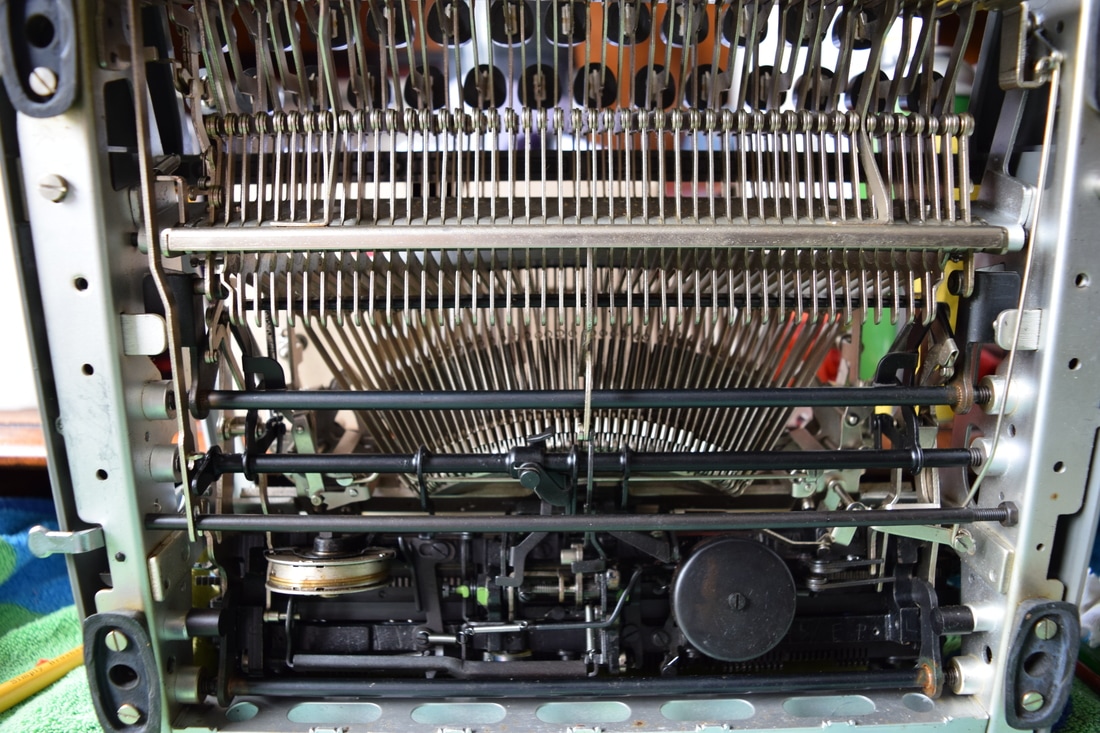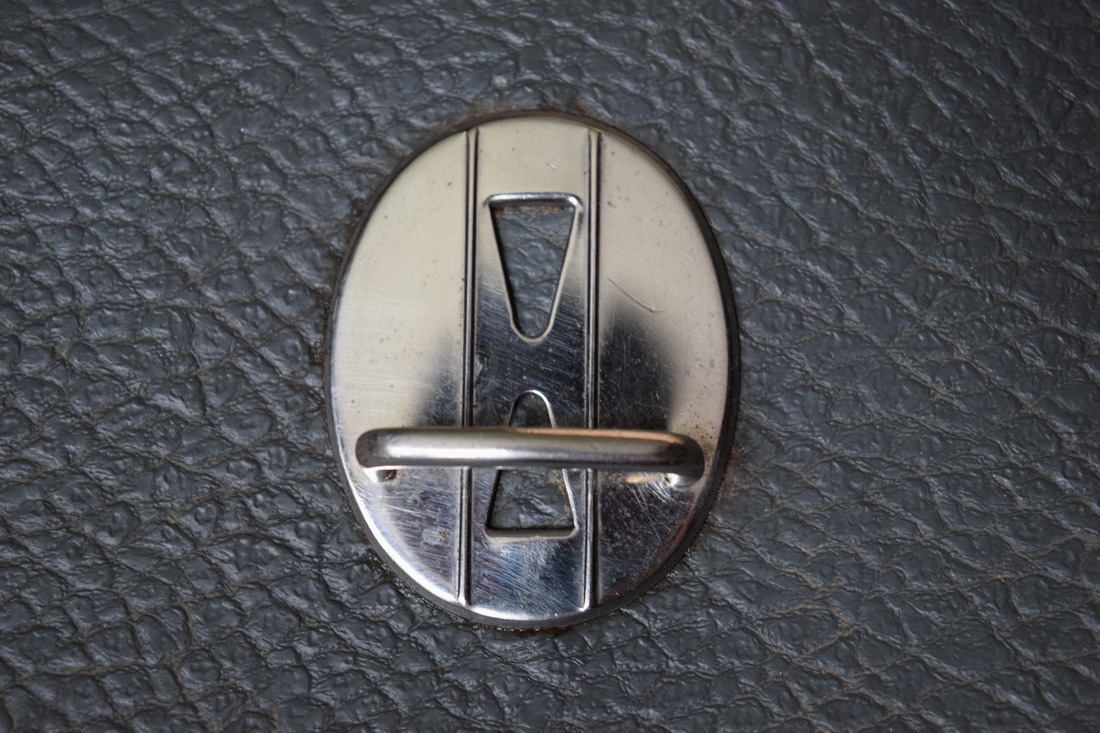How To Clean And Oil a Typewriter
Every typewriter needs some kind of cleaning or servicing done before it can be used reliably or resold for actual use. Even typewriters kept in their original, unopened box for sixty years need some work before they can be used. Upon examination of any typewriter, cleaning and lubrication of these amazing machines may seem complicated. In reality, almost anyone with the proper tools and knowledge can effectively clean and oil a typewriter.
|
|
What You'll Need For The Basic Cleaning/Oiling:
- Cleaning Cloths: Find a T-Shirt you don't wear anymore and cut it up into squares about 4-6 inches long on each side. Cloths will be used to wipe off dust and dirt from the typewriter- mainly the surfaces- including the case. Cloths also are used to apply cleaning chemicals and to polish metal. You can also use any other clean rags you may have laying around.
- Flathead/Slotted Screwdriver(s): You'll probably want at least a few screwdrivers if you plan on taking apart your machine at all. For the most thorough job, you will want to remove the body, which requires some unscrewing. It helps to have a decent collection of screwdrivers of varying sizes in order to properly fit the various screw sizes you may encounter.
- Brushes: If you don't have any brushes laying around, I recommend going out to your local craft store and picking up a variety pack of smaller-sized paint brushes. Brushes are used to easily get the dust and some grime out of the inner workings, along with the help of a vacuum. With a solvent (such as rubbing alcohol) applied to the brush, the brushes can easily clear out old oil and grease.
- Dishwashing Liquid, Water, Cups: Dishwashing liquid and water is used to dampen a cloth, which in turn is used to clean the paint, and case. Use two separate cups- one for rubbing alcohol, and the other for the dish-washing liquid and water solution.
- Rubbing Alcohol, or WD-40: These cleaners are great for clearing light rust, old oil, grease, dirt, grime, and also do a decent job of shining up the exterior metal parts (chrome and nickel plating) when absorbed into a cloth.
- Vacuum: While it's not the only way to clean a typewriter, it's how I do it. The extension arm on the vacuum can be held next to where you're cleaning with the brush and sucks up the dust.
- Rem-Oil: This is probably the best oil on the market today for oiling typewriters. Note that you only oil a typewriter after you've cleaned the mechanism. You'll learn more about this later.
- Flitz Metal Polish: This stuff works extremely well with shining up chrome and nickel plating. Use a cloth or rag to apply, polish, and wipe clean.
- Meguiar's Scratch X 2.0: This is said to remove scratches, however I find it best suited to use as a wax. I only use this one typewriters with a glossy finish. Even after cleaning paint with soap and water, there still can be a layer of grime left, and this stuff removes that layer of light grime (if present) and really makes the typewriter shine.
- Toothpaste & Toothbrush: I have recently had a ton of success with using toothpaste to clean paint on typewriters with crinkle-style paint. Toothpaste is able to clean out the stains and grime which have been kept for years within the crinkles of the paint; something that dishwashing liquid and water is unable to do very well. Just wet a toothbrush and apply some toothpaste and scrub away. Wipe it away with a cloth. This can be repeated as you find necessary, however it usually works pretty fast depending on how dirty the paint is.
- Scissors: Usually only used when re-threading typewriter ribbon.
- Tweezers: Usually only used for picking out screws that fall inside a typewriter and are out of reach by hand, however they can remove other debris that you don't want to vacuum up.
- Needle-Nose Pliers: Most useful in bending metal parts back to the form of shape they should be in. Sometimes you'll find that parts have been bent, and the only way to fix them is to bend them back. As always, be careful and gentle with bending to minimize the risk of you breaking the piece all together.
|
|
The Job Begins:
Let's start with a 1930s Remington Noiseless typewriter that I've recently purchased from an antique store (Editor's note: I recently added some photos from an Erika Model 14 and its cleaning process- different machine but same overall principles). Both typewriters, especially the Erika, have quite a bit of dust that needs to be cleaned out before anything else can be done. With that in mind, lets gets started!
First:
Put a large rag, towel, or a bunch of newspaper underneath the typewriter to absorb any dirt, dust, or oil that will fall from the machine during the process.
I highly recommend cleaning your machine on a sort of work-bench or desk if possible, but note that a lot of these photos were done on the ground to make photo-taking easier.
If your typewriter comes with some kind of case, unlatch and remove your machine from the carrying case. If your typewriter is screwed to a base and has a lid, use a flat head screw driver and unscrew it from the base if possible.
Try to open up any covers that will give you access to more area to clean inside the typewriter. If you want the most thorough cleaning, you can unscrew all the outside covers to get the easiest access to cleaning the insides of the machines. This is not needed in most cases unless your typewriter is extremely dirty. I usually don't recommend unscrewing too much, especially if you are worried about remembering how to put it back together. Just keep in mind that in most cases, the more area inside the typewriter you expose to clean, the more dust-free and clean the typewriter will be in the end.
I highly recommend cleaning your machine on a sort of work-bench or desk if possible, but note that a lot of these photos were done on the ground to make photo-taking easier.
If your typewriter comes with some kind of case, unlatch and remove your machine from the carrying case. If your typewriter is screwed to a base and has a lid, use a flat head screw driver and unscrew it from the base if possible.
Try to open up any covers that will give you access to more area to clean inside the typewriter. If you want the most thorough cleaning, you can unscrew all the outside covers to get the easiest access to cleaning the insides of the machines. This is not needed in most cases unless your typewriter is extremely dirty. I usually don't recommend unscrewing too much, especially if you are worried about remembering how to put it back together. Just keep in mind that in most cases, the more area inside the typewriter you expose to clean, the more dust-free and clean the typewriter will be in the end.
Second:
Start by using your vacuum and one of your brushes to wipe away the dust found just about anywhere on a typewriter. I find it the easiest to hold the extension arm within 6 inches of the area you're brushing to suck up all of the dust that you are freeing up with your brush. Without the vacuum, the dust would just be spread around instead of being sucked up. This is one of the longest parts of cleaning, but also one of the most important. Make sure to clean just about every part of your machine. Remove ANY dust that you see. Lift the machine so that it lays on its back, giving you access to the bottom of the typewriter. Move the carriage to the right and left, and be sure to clean everything you see. For cleaning the carriage rail area, make sure your margins are as wide as they go. Even keeping the shift-lock key depressed may expose new areas to be cleaned. Getting out all, or nearly all of the dust out of the inner workings of the typewriter is important, because when the time comes to oil, you'll want to have little to no dust in the way to gum things up again.
After you feel that you've thoroughly cleaned out the typewriter from dust, make sure to leave any unscrewed covers open. You're not quite done yet.
After you feel that you've thoroughly cleaned out the typewriter from dust, make sure to leave any unscrewed covers open. You're not quite done yet.
Here's a few quick before and after shots on the Erika Model 14. This was achieved only in a few minutes with the help of a brush, and the vacuum extension arm.
Third:
Now that all the dust, or at least most of the dust is removed from the typewriter, you can begin to use your rubbing alcohol. If your typewriter has sticky or slow keys, this part is also needed. Clean off your brush and then dip it in some rubbing alcohol. Apply the alcohol to any joints and moving parts of the mechanism where metal meets metal. You can look at the above picture to get a better sense on where it's most important to clean in this step. Keep in mind that both alcohol and WD-40 do not do their jobs by themselves. You will need to scrub a little bit with a brush, Q-tips, or rags in getting the grime out. WD-40 is not a favored product among many typewriter repairmen/enthusiasts, however I know several who use it correctly and don't have any issues. If you do use WD-40, I recommend you use it very sparingly, and wipe away any excess.
For sticky keys, see:
https://kytyper.com/blogs/news/103996934-how-to-fix-sticky-typewriter-keys
https://www.youtube.com/watch?v=URhjSGGaq6c
For sticky keys, see:
https://kytyper.com/blogs/news/103996934-how-to-fix-sticky-typewriter-keys
https://www.youtube.com/watch?v=URhjSGGaq6c
Fourth:
With the mechanisms now clear, it's time for the oiling. Using the suggested Rem-Oil, spray a little bit of oil in the same type of spots where you cleaned with the alcohol inside the mechanisms. Do not spray the stuff everywhere you see metal or mechanism. Use it sparingly, and always wipe away any excess. For places I didn't individually photograph, try to apply oil to pivot points or joints. For many, a typewriter mechanism such as the picture above may look like an enigma. The easiest way to find these pivot points that benefit from oil is to depress the spacebar, a key, the shift key, backspace key, etc. and see where metal moves or pivots against metal. If you use your typewriter a lot, feel free to apply new oil when you feel it is needed.
Keep in mind that the reason for using oil and wiping off excess is to prevent the oil from attracting extra dust, and gumming up the mechanism- eventually making things worse. Even if you did wipe off excess oil, it's a good idea to keep your machine covered to prevent dust accumulation.
Keep in mind that the reason for using oil and wiping off excess is to prevent the oil from attracting extra dust, and gumming up the mechanism- eventually making things worse. Even if you did wipe off excess oil, it's a good idea to keep your machine covered to prevent dust accumulation.
Fifth:
Now that the mechanisms are nice and clean and have fresh oil lubricating them, it's time to do some shining up. Many collectors have their favorite products for cleaning up paint and making it shine, but I prefer to start out with water with some dishwashing liquid in it. Use your cloths and lightly dampen one and wipe the exterior covers and parts of the typewriter (not the chrome/nickel plating) and be especially careful and cautious around the labels... They come off very easily, or can be damaged with just about anything. Use another cloth to dry the area you wiped clean with the damp cloth. You may want to repeat this process as you feel necessary. If you have some kind of wax (I suggest Meguiar's Scratch X 2.0) you can apply it by putting a blob of it on a cloth and rubbing it on the paint (once again, careful around the labels). Often I find that the wax does an even better job of picking up the fine layer of grime and really making the typewriter shine like new.
Note that some typewriters have a crinkle finish, and others may have a more flat paint finish that wasn't made to shine like a mirror. The Noiseless I'm using as an example does have a glossy, shiny finish.
If the rubber platen on your typewriter is quite dirty and has some trouble feeding, I'd always recommend using rubbing alcohol and a cloth to rub the platen clean. Just stroke the platen with the dampened rubbing alcohol cloth and roll the platen while rubbing side to side. This should clean up the platen enough to where it looks much better. In fact, it you scroll all the way down, you can compare the uncleaned platen to the cleaned platen and see how much a little rubbing alcohol does. The dishwashing liquid and water solution also works well with platens.
For shining up metal, try using the cloths and rubbing alcohol, followed by the Flitz metal polish. The chrome or nickel plated parts shine up very nicely with rubbing alcohol and Flitz, but remember that the interior mechanism weren't made to shine as much as the exterior chrome/nickel parts, so don't waste your time trying to polish those. DO NOT get rubbing alcohol on the paint of any typewriter with a glossy finish, or a crinkle finish. It tends to leave a white stain and damage the paint. Rubbing alcohol is rather effective on cleaning other paint finishes, however, so if your typewriter is plastic or has a flat finish, give it a small-scale test before going to town on it.
Cleaning out the typewriter's case is just as important (if it has one). Be sure to vacuum out the dust and dirt found inside the case where the typewriter sits so that the dust doesn't go back into the typewriter after you've cleaned it so thoroughly. You can experiment with just about any reasonable cleaning solvent to make the outside of the case cleaner and look better, as I'm sure almost anything would work okay.
Note that some typewriters have a crinkle finish, and others may have a more flat paint finish that wasn't made to shine like a mirror. The Noiseless I'm using as an example does have a glossy, shiny finish.
If the rubber platen on your typewriter is quite dirty and has some trouble feeding, I'd always recommend using rubbing alcohol and a cloth to rub the platen clean. Just stroke the platen with the dampened rubbing alcohol cloth and roll the platen while rubbing side to side. This should clean up the platen enough to where it looks much better. In fact, it you scroll all the way down, you can compare the uncleaned platen to the cleaned platen and see how much a little rubbing alcohol does. The dishwashing liquid and water solution also works well with platens.
For shining up metal, try using the cloths and rubbing alcohol, followed by the Flitz metal polish. The chrome or nickel plated parts shine up very nicely with rubbing alcohol and Flitz, but remember that the interior mechanism weren't made to shine as much as the exterior chrome/nickel parts, so don't waste your time trying to polish those. DO NOT get rubbing alcohol on the paint of any typewriter with a glossy finish, or a crinkle finish. It tends to leave a white stain and damage the paint. Rubbing alcohol is rather effective on cleaning other paint finishes, however, so if your typewriter is plastic or has a flat finish, give it a small-scale test before going to town on it.
Cleaning out the typewriter's case is just as important (if it has one). Be sure to vacuum out the dust and dirt found inside the case where the typewriter sits so that the dust doesn't go back into the typewriter after you've cleaned it so thoroughly. You can experiment with just about any reasonable cleaning solvent to make the outside of the case cleaner and look better, as I'm sure almost anything would work okay.
Sixth:
You are now ready to re-screw all the parts you may have taken off and clean up the mess you made. You can also install a new ribbon, if needed. Ribbons can be bought here: http://www.typewriters101.com/typewriter-ribbons-for-sale.html
If you weren't lucky and your typewriter is having mechanical issues, feel free to contact me and I can help you out. There are hundreds of mechanical things that could go wrong, so I can't cover them all on this site.
If you have any additional questions or suggestions, I'm always here, so just contact me and I will reply.
If you weren't lucky and your typewriter is having mechanical issues, feel free to contact me and I can help you out. There are hundreds of mechanical things that could go wrong, so I can't cover them all on this site.
If you have any additional questions or suggestions, I'm always here, so just contact me and I will reply.
|
|

